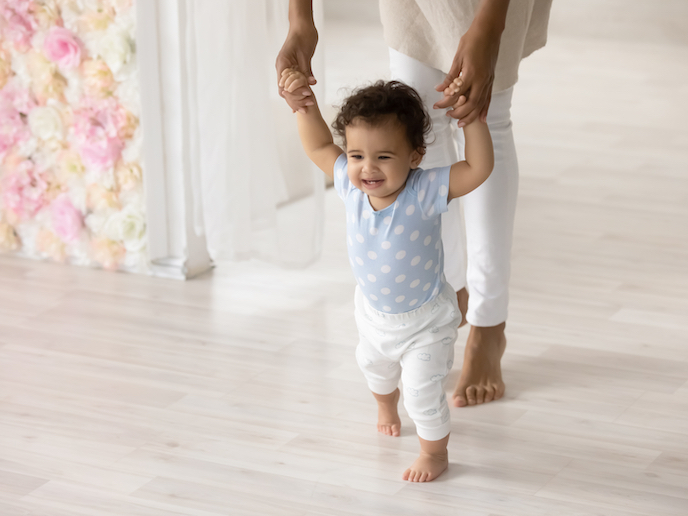Seeking the neural origin of a toddler’s first steps
Humans have been walking for millions of years. Yet how exactly this behaviour manifests is still unknown. Children have an instinct to walk from the moment they are born – and even before. This ‘stepping reflex’ is hardwired in our neural circuitry: if you hold a newborn child under the armpits it will instinctively try to plod forward. Around the year mark, typically developing children are able to walk around unaided on their own. “This moment triggers fundamental developmental changes,” says Nadia Dominici(opens in new window), associate professor at the Faculty of Behavioural and Movement Sciences(opens in new window), Vrije Universiteit Amsterdam. “Actually, failing to reach this milestone by an age of 18-20 months may indicate developmental delay,” she adds. The Learn2Walk project, funded by the European Research Council(opens in new window), explored the differences in walking development between typically developing children and children affected by cerebral palsy, by studying the interplay between brain and muscles. “Thanks to the fantastic job of my team and collaborators, we were able to collect a huge data set during a complex experimental setting,” says Dominici.
Investigating the links between brain and body
In her previous research(opens in new window), Dominici showed that the coordinated muscle activation in neonate stepping can be described by two basic activation patterns. The first, ‘congenital synergies’, are patterns that are retained throughout development. These are superimposed with two new patterns, ‘supplementary synergies’, that emerge in toddlers. “We wanted to demonstrate that the new patterns that became visible in toddlers walking independently are complemented by an emerging brain activity,” Dominici explains. She hypothesised that this emergent brain activity occurs at the onset of independent walking, in a phase transition. During this time, the brain switches to a new, stable state once a certain ‘critical point’ has been passed.
Trials of walking development in toddlers
To investigate these links further, Dominici and her team ran a series of trials, following the development of walking in two groups of toddlers – one of typically developing children and the other of children with cerebral palsy. They monitored muscular and brain activity during the walks, and also used motion capture technology to capture the toddler kinematics. “Parents and babies visited our labs multiple times from the moment their babies were just a few months old until they were 24-32 months old,” notes Dominici, stressing that the involvement of the parents was fundamental to the project. One important recording session was the ‘First Steps session’; throughout the project the team was in contact with the parents to try to monitor their babies’ development as they drew closer to this pivotal moment. These were complex recordings, says Dominici, but: “Every time, we had a smiling baby leaving the lab.”
Potential for rehabilitation before the age of two
The team found that brain synchronisation with the additional ‘synergies’ – patterns – is crucial to the emergence of independent walking, and that toddlers with cerebral palsy require fewer synergies compared to typically developing toddlers early on in their movement development. “Thus, the critical developmental window may be before the age of two years old, when the brain is highly plastic, and the corticospinal tract is still maturing,” adds Dominici. “Rehabilitation techniques that can stimulate or increase these synchronisations from a very early age may be a novel strategy to pursue to promote independent, functional and efficient walking in children affected by cerebral palsy,” she explains.







